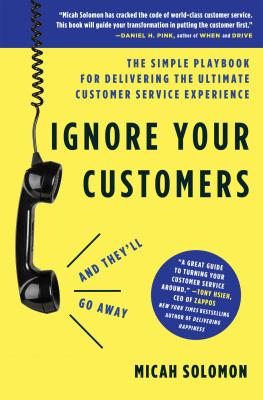10 STEPS TO SUCCESS
Lets face it, most people spend their days in chaotic, fast-paced,time- and resource-strained organizations. Finding time for justone more project, assignment, or even learning opportunitynomatter how career enhancing or usefulis difficult to imagine. The10 Steps series is designed for todays busy professional who needsadvice and guidance on a wide array of topics ranging from projectmanagement to people management, from business strategy to decisionmaking and time management, from leading effective meetingsto researching and creating a compelling presentation. Eachbook in this new ASTD series promises to take its readers on a journeyto solid understanding,with practical application the ultimatedestination. This is truly a just-tell-me-what-to-do-now series. Youwill find action-driven language teamed with examples, worksheets,case studies, and tools to help you quickly implement the rightsteps and chart a path to your own success. The 10 Steps serieswill appeal to a broad business audience from middle managers toupper-level management. Workplace learning and human resourceprofessionals along with other professionals seeking to improvetheir value proposition in their organizations will find these booksa great resource.
2010 the American Society for Training & Development
All rights reserved. Printed in the United States of America.
16 15 14 13 12 11 10 1 2 3 4 5 6 7 8 9 10
No part of this publication may be reproduced, distributed, or transmitted in anyform or by any means, including photocopying, recording, or other electronic ormechanical methods, without the prior written permission of the publisher, exceptin the case of brief quotations embodied in critical reviews and certain othernoncommercial uses permitted by copyright law. For permission requests, pleasego to www.copyright.com, or contact Copyright Clearance Center (CCC), 222 RosewoodDrive, Danvers, MA 01923 (telephone: 978.750.8400, fax: 978.646.8600).
ASTD Press is an internationally renowned source of insightful and practical informationon workplace learning and performance topics, including training basics,evaluation and return on investment, instructional systems development,e-learning, leadership, and career development. Visit us at www.astd.org/astdpress.
Ordering information: Books published by ASTD Press can be purchased by visiting our website at store.astd.org or by calling 800.628.2783 or 703.683.8100.
Library of Congress Control Number: 2009920428
ISBN-10: 1-56286-590-0
ISBN-13: 978-1-56286-590-0
ASTD Press Editorial Staff:
Director of Content: Dean Smith
Manager, ASTD Press: Jacqueline Edlund-Braun
Senior Associate Editor: Tora Estep
Senior Associate Editor: Justin Brusino
Editorial Assistant: Victoria DeVaux
Editorial, Design, and Production: Abella Publishing Services, LLC
Cover Design: Katherine Warminsky
Printed by Versa Press, Inc., East Peoria, IL, www.versapress.com
CONTENTS
| vii |
| xi |
| xiii |
| 1 |
| 17 |
| 29 |
| 45 |
| 63 |
| 77 |
| 93 |
| 103 |
| 123 |
| 135 |
| 147 |
| 149 |
| 153 |
| 161 |
| 163 |
| 169 |
Please read carefully because our menu has changed. Press one (1) if you would like to skip this step. Press two (2) if you would like to learn more about the author. Press three (3) if you would like to request that this book have an audio option. Press four (4) if you would like to continue. Press five (5) if you would like to speak to a representative who can give you the Cliff Notes or Readers Digest version. Sorry, that was a wrong entry. Please go back to the main menu.
Although the above instructions are obviously written in jest, often the phrase press one conjures up frustration, stories about service gone bad, and emotions that range from disappointment to anger. In a book about customer service, it would be remiss to ignore that service is not always stellar, and that technological communication channels exponentially increase the ways interactions can go awry.
Nobody can dispute that it is annoying to be misunderstood by an automated attendant (Sorry, we didnt understand that entry); told to call back at more convenient hours for the organization, not the customer (We are at lunch from 122); or admonished for pressing 0 for help (This is a wrong entry. Goodbye.). While the act of being cut off may not seem monumental in and of itself, it goes to the core of our hearts. We have been rejected in our attempt to connect. Whether it is on the phone or in person, everyone wants to connect at some level. This is the foundation of the human experience, of which customer service is a part.
Customers have expectations. Most of them are reasonable. These expectations almost always have a human element, whether it is obvious or not. For instance, customers expect that company officials care enough to make a transaction efficient and easy (human beings are behind the technology), or that face-to-face interactions are friendly and receptive (clearly interpersonal). Associating with any organization is an extension of customer trust: I have chosen you to trust, and I believe that you will take care of my needs.
Trust involves an underlying assumption that someone cares. It requires that there will be a person up front or behind the scenes who is devoted to serving the customer in a responsible way that honors agreements and results in the customer feeling valued.
Top-level executives are responsible for establishing the vision and mission for a responsive customer service culture. Everyone in the organization plays a part in working toward the vision and in making the mission a reality. A well-known hotels vision is to make the customer feel at home. True to the vision, managers empower staff to do whatever it takes to make customers feel welcomed. Housekeepers, front desk clerks, parking attendants, and all staff members are empowered. They have a certain amount of money to use if on-the-spot assistance is required but not available through ordinary channels.
It Takes the Team
Not all staff members in an organization are fortunate enough to have dollars at their command. However, to piggyback on Hillary Clintons concept of it takes a village, it takes everyone in a company to accomplish the vision of pleasing the customer. If you are a manager, supervisor, coordinator, or any type of leader, your role is to guide and inspire your staff. You are the one who deals with customers whom your associates have done everything within their power to please. They look to you for the one thing you can do to turn the situation around. Then they look to you for support and recognition for their efforts.
If you are a trainer, your expertise is critical to your organization. By providing workshops, seminars, coaching sessions, and even brown bag lunches, you can reinforce the service your company expects. Extra service to colleagues is a plus, such as one-on-one sessions for people who need hands-on help in learning a new program or concept. As one who does not formally evaluate employees, you are often perceived as a safe haven. You can be an enormous formal or informal customer service provider.
If you are a frontline staff member, you are the showcase for all the hard work that has gone on in the background. You display your talents as well. You demonstrate the skills you have every minute of the day. Youre right out there. Everything you do is an opportunity to excel at service.








